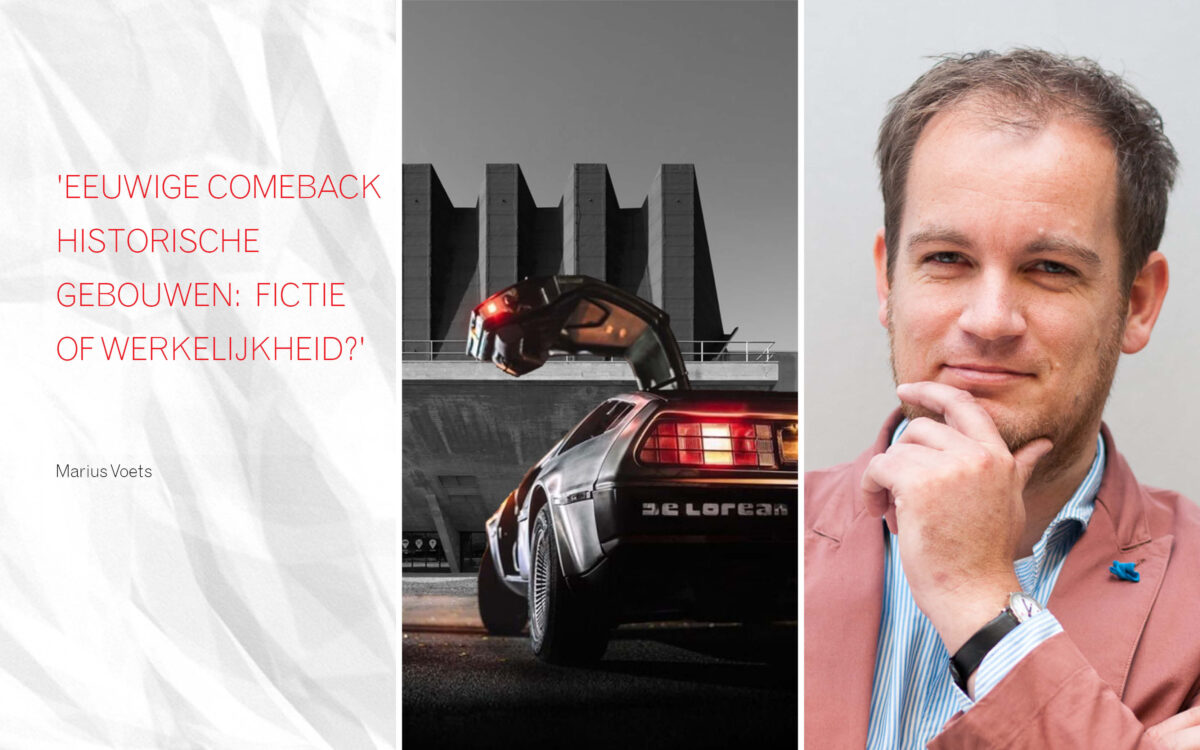
Blog: Eternal comeback historic buildings: fiction or reality?
7 December 2023
By: Marius Voets
It is quite a crazy idea, entire generations have grown up in a disposable world and for some it is hard to break that old habit. I also think about the demolition mentality in my world, not only literally but also figuratively. Take the restoration of monumental buildings, you can refurbish them but forget their original function and thus figuratively ‘demolish’ the future. An ‘eternal comeback’ requires more than conservation or sustainable restoration to its former state.
REUSE OF FUNCTIONS
For this, you first have to go back to the original function of a building. What was the purpose or social significance of the design? Can you make that function current and contemporary again, and what does that yield? Out of haste or because of spatial necessity, this step is sometimes forgotten or skipped. Of course, there is also the urgency of increasing energy sustainability, but this does not necessarily extend the lifespan. The more buildings remain functional for longer, the less you need to rebuild. The circular harvest in the built environment grows from that retention of function.
BACK TO THE FUTURE
Of course, just looking back is not enough; you want a contemporary building that will last. Let’s fast-forward time for a moment; “Back to the Future”. Under what conditions will a place remain of value for generations 150 years from now? What makes such a building monument-worthy? My guess is that it will not be the solar panels or insulation, by which time today’s technology will be far outdated, nor the nostalgic look of 1930s architecture, for example. But what then? We can learn a lot from renowned architects from 100 years ago.
COMMUNITY
Sybold van Ravesteyn, Leendert van der Vlugt, Huig Maaskant and Jaap Bakema, they designed monument-worthy buildings and thought thoroughly about the function of buildings for society. Also with a view to the long term. Many historical sites are built on the principle of community spirit and we need that social cohesion so badly in these times. Their designs remain timeless and retain their value as long as you restore the original function wherever possible.
NO HAPHAZARD FUNCTIONS
Historic buildings that you keep at the heart of society in this way have a greater chance of survival. The art of transformation and renovation is to seek social relevance from the original design idea by combining original and contemporary functions. The more timeless, the more valuable but you can’t do that if you come up with functions haphazardly. I feel it is an inspiring challenge to find the balance between original and contemporary. That makes me think of our collaboration with Blijdorp Zoo.
VALUE RETENTION
In this area, we are step by step bringing back the functions of days gone by. The Riviera Hall and the forecourt on the city side are beautiful places, once designed as meeting places for inhabitants of the city and the surrounding district. Historical research revealed those design secrets and then you are faced with choices of principle. Do you restore the public functions for the relationship with the surrounding neighbourhood or city? That will give a place or building new social significance and, at the bottom of the line, you are reusing old functions for a circular economy.
CHOOSING FOR THE SURROUNDINGS
Or do you make concessions because in the short term you mainly need more square metres. For Blijdorp Zoo, the relationship with the city weighed more heavily, so these places are now getting their original function back. You also see such dilemmas in other places, such as city halls that are located in historical buildings. Formerly designed with a social purpose, they are now used as working environments for the civil service. And that has a price; the relationship with the environment is diluted while the government wants to reduce the distance to the citizen.
SHARED SPACES
A missed opportunity, because we live in a sharing economy where shared use of space is the most normal thing in the world. Why not give those spaces back their original function? That way, you respond to the need for shared spaces and social cohesion for stronger communities. The Netherlands has 63,000 national monuments and many listed buildings, not counting the future transformation of other places. And society is eager for more places to connect and meet. I smell opportunities for everyone thinking about the ‘come back’ of monument-worthy buildings as ‘social space’.